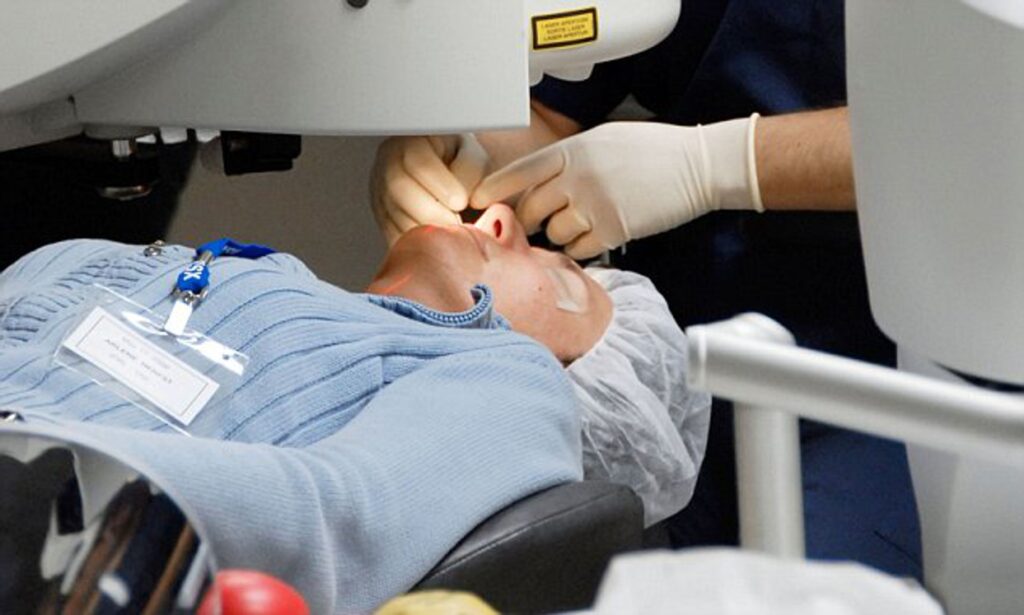Cataract surgery is unique in its ability to correct cataracts from the eyes lens of patients. Cataracts are the appearance of the cloudy lens of your eye. The natural lens may also appear opaque in some patients. When this cloud lens capsule occurs in the patient, it may lead to the patient’s vision problems. Cataracts form slowly and are noticed mainly in people aged 50 and above.
However, cataracts may also occur in younger people. There is no clear path to preventing the occurrence of cataracts. But the use of a protective shield and quitting smoking helps to slow down the cataract development process. Cataract surgery swaps the eye lens with a replacement lens, usually an artificial lens.
Cataract surgery is the permanent solution to cataracts. The Personal Eye follow different types of cataract surgery, depending on the artificial lens capsule you choose. This article discusses facts about cataract surgery, including the choices and reasons.
Who might need cataract surgery and why?
Never assume everyone who has a cataract in their eye needs to undergo cataract surgery. The early stages of cataracts may lead to other eye problems. Examples include myopia or nearsightedness, or other complications. The standing solution is to get a professional eye doctor who can correct these symptoms by wearing glasses alone.

At the same time, cataract surgery may not be needed until it remains evident after a long while. This is because cataracts take some time to form. After all, the formation process is slow. So, after a thorough examination, the doctor can determine whether you need cataract surgery.
The most crucial symptom of cataracts is its limitation on the patient in usual activities. For instance, the patient may struggle when watching TV, reading, and even driving. Therefore, anyone suffering from cataracts needs to fix an appointment with the doctor’s office.
Basic Types of Cataract surgery
Cataract surgery enables patients to look at bright lights through a clear artificial lens in normal vision. Even if the patient surfer’s retinal detachment or blurry vision, the replacement lens solves the problem. Also, distance vision returns after replacing the clouded lens with a new artificial lens.
Cataract surgery has different types, but the commonest is the small incision cataract surgery (SCIS). This method is also known as phacoemulsification cataract surgery. In addition, there is extracapsular cataract surgery and others with different artificial lens capsules.
Small Incision Cataract Surgery (SICS) or Phacoemulsification Cataract Surgery
SICS is the most routine cataract surgery because it only requires a small incision on the lens capsule. After making this incision, the eye doctor uses a probe into the small opening and destroys the protein covering the eye lens.

Breaking up the cataract lens is also essential through the small incision. Then the broken parts of the lens are removed, but the small hole allows the healing procedure to be as fast as possible. Finally, the pieces are removed with a different device.
The next stage of cataract surgery is to conduct an artificial lens implant on the eye. First, the eye doctor inserts an intraocular lens (IOL) into the small incision opening. When the artificial lens is in place, the procedure is practically complete. You only need to wait a few minutes to allow your sedation to wane before leaving the hospital or clinic.
Extracapsular Cataract Surgery
In the case of extracapsular cataract surgery, the eye surgeon makes an extended opening on the eye of the patient. It is similar to phaco, but the eye surgeon makes a larger incision on the top of the eye.
Unlike phacoemulsification, which requires a small incision, extracapsular cataract surgery removes the middle of the eye lens. In addition, after removing the lens, the rest of the process is the same as you would have during phacoemulsification. The complete artificial lens implant signifies the completion of the process.
What to expect during and after a Cataract surgery
When a proper examination shows that you must undergo cataract surgery, the first step is to prep the team to examine the patient’s clinical history. When everything is in place, the eye surgeon will start the operation. At the same time, the patient can expect the following basic steps.

The medical team usually gives medication to the patient to aid relaxation and lower tension. The patient also gets some eye drops or injections in areas close to the eye. This drug helps to create a numbness around the person’s eye to be operated on.
While having cataract surgery, the patient is usually very awake, only that they don’t feel a thing around the eyes. But the patient may still see the light pass around and the movement of people. However, the patient will not be able to see what the eye surgeon is doing on the eye.
The eye surgeon makes a tiny incision on the eye’s lens, allowing him to reach the affected part. Then he removes the natural lens and replaces it with a synthetic lens implant.
Since this process only requires making a tiny incision, there is no need to stitch anything. Hence, the eye can also naturally recover on its own in no time.
After the procedure, the eye surgeon puts a protective shield on the operated eye to cover it and keep it away from tampering and infection. Then, he moves the patient to the recovery room. This entire process should take an average of 15 minutes, give or take.
Conclusion
In conclusion, cataract surgery is a lasting solution for eye problems beyond cataracts. For instance, cataract surgery can help patients suffering from astigmatism, myopia, or hyperopia. Moreover, the recovery time ranges from a few weeks to about a month. Then, the person can resume normal activities in no time. Cataract surgery is also a very safe procedure and has various types. Each type of cataract surgery comes at a different cost that is often affordable to many. If you like to consider cataract surgery for an eye problem, kindly contact us.

